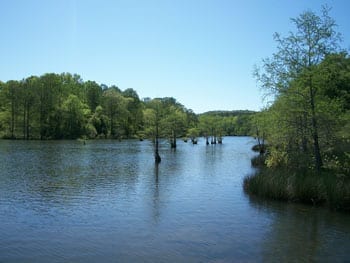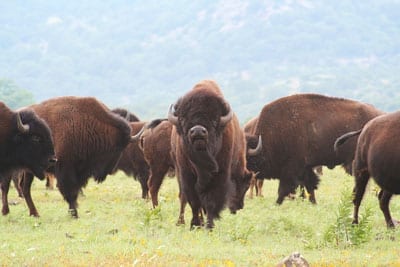Oklahoma Factoring Company Programs
Invoice factoring, which is also commonly referred to as accounts receivable financing, is a solution many Oklahoma companies use to speed up their cash flow.
Scale Funding is a factoring company serving business in Oklahoma. With invoice factoring, instead of worrying about when you’ll get paid, you can focus on your business operations. Use your steady cash flow to pay bills, meet payroll or invest in new resources to expand your operations.
There are many Oklahoma factoring company programs, but choosing Scale Funding provides your business with many advantages. Besides our top-rated invoice factoring programs, you’ll also have many back-office support services available to you at no extra charge. From a dedicated account manager and AR specialists to credit analysis and a full treasury department, our valued-added services reduce your stress by providing same-day funding and accounts receivable management.
Factoring is Different than a Business Loan or Line of Credit
Although business loans and lines of credit can provide your business with some additional cash, these options don’t speed up your cash flow.
Once your credit is maxed, or you need more funding because of business growth, it can be difficult to obtain more as it creates debt on your balance sheet. Invoice factoring eliminates this problem as there is no debt created and the more contracts you win, the more working capital you’ll receive.
Industry Expertise
We’re able to provide top-notch Oklahoma accounts receivable financing programs to a variety of industries. For more than 20 years, companies in Oklahoma and all across North America have used our services to take control of their business finances.
| Oilfield Services | Utility & Pipeline |
| Heavy Construction | Trucking & Freight |
| Telecom & Wireless | Technology |
| Government Contractors | Staffing Agencies |
| Renewable Energy | Printing |
| Distribution | Many More |
Why Invoice Factoring?
Invoice factoring is a good solution for many companies because it provides the cash needed that they would sometimes not be able to get from a traditional lending source like a bank.
Our Oklahoma factoring company programs are flexible and customized so that we can finance those in unique situations like the ones listed below.
- Industries with slow-paying customers.
- Companies that are expanding quickly.
- Companies that are starting up and need the capital to complete contracts.
- Those that have maxed-out credit.
- Companies that have less-than-perfect credit.
- People or companies with tax issues such as liens.
- Companies in a bank workout situation.
- Companies that are going through bankruptcy.
Scale Funding has worked with a variety of companies throughout Oklahoma in cities including:
| Admore | Blanchard | Edmond |
| Lawton | Norman | Oklahoma City |
| Stillwater | Tulsa | Yukon |
Latest Oklahoma Updates
- Ardmore, Oklahoma Frac Sand Hauler Funded $400,000 with Oklahoma Invoice Factoring
- Moore, Oklahoma Telecom Company Funded $80,000 with Oklahoma Invoice Factoring
- Blanchard, Oklahoma Oilfield Service Company Funded $200,000 with Accounts Receivable Financing
- Minco, Oklahoma Oilfield Trucking Company Funded $10,000 with Invoice Factoring
- Elmore City, Oklahoma Pipeline Construction Company Funded $25,000 with an Oklahoma Accounts Receivable Factoring Line
Oklahoma
“Oklahoma, where the wind comes sweepin’ down the plain, And the wavin’ wheat can sure smell sweet – when the wind comes right behind the rain ….” Written by Oscar Hammerstein II, and music by Richard Rodgers. This song describes Oklahoma and is incorporated in “Oklahoma” a well-known theatre production.
 Oklahoma is a Midwestern U.S. state between the Great Plains and the Ozark Plateau in the Gulf of Mexico watershed, generally sloping from the high plains of its western boundary to the low wetlands of its southeastern border. Oklahoma has four primary mountain ranges: the Ouachita Mountains (which cover much of southeastern Oklahoma), the Arbuckle Mountains, the Wichita Mountains, and the Ozark Mountains.
Oklahoma is a Midwestern U.S. state between the Great Plains and the Ozark Plateau in the Gulf of Mexico watershed, generally sloping from the high plains of its western boundary to the low wetlands of its southeastern border. Oklahoma has four primary mountain ranges: the Ouachita Mountains (which cover much of southeastern Oklahoma), the Arbuckle Mountains, the Wichita Mountains, and the Ozark Mountains.
Oklahoma has 50 state parks, six national parks, two national protected forests or grasslands, and a network of wildlife preserves and conservation areas. Six percent of the state’s 10 million acres of forest is public land, including the western portions of the Ouachita National Forest, the largest and oldest national forest in the Southern United States.
History
Initially, the state of Oklahoma was set aside for the exclusive use of the Indians and was called Indian Territory. However, in 1889, the land was opened to settlers in what became known as the “Oklahoma Land Rush.” On April 22, 1889, the first opening day, 50,000 people swarmed into the area. Those who tried to beat the noon starting gun were called Sooners, hence the state’s nickname. The name Oklahoma comes from the Choctaw phrase “okla humma,” literally meaning “red people.” Equivalent to the English word Indian, “okla humma” was a phrase in the Choctaw language used to describe Native American people as a whole.
Oklahoma became the 47th state in 1907, following several acts that incorporated more and more Indian tribal land into U.S. territory. After its inclusion in the union, Oklahoma became a center for oil production, with much of the state’s early growth coming from that industry. During the 1930s, Oklahoma suffered from droughts and high winds, destroying many farms and creating the infamous Dust Bowl of the Great Depression era.
Industry
Oklahoma is a major producer of natural gas, oil, and agricultural products. Oklahoma relies on an economic base of aviation, energy, telecommunications, and biotechnology. The state is the top manufacturer of tires in North America and contains one of the fastest-growing biotechnology industries in the nation. Tire manufacturing, meat processing, oil and gas equipment manufacturing, and air conditioner manufacturing are the state’s largest manufacturing industries. Oklahoma also ranks 5th in production of wheat. Tulsa is home to the biggest airline maintenance base in the world.
Oklahoma is the nation’s third-largest producer of natural gas, fifth-largest producer of crude oil and has the second-greatest number of active drilling rigs. It also ranks fifth in crude oil reserves. While the state ranked 8th for installed wind energy capacity in 2011, it’s at the bottom in the usage of renewable energy.
Top Companies
Devon Energy Corporation, Chesapeake Energy Corporation, and SandRidge Energy Corporation are the largest private oil-related companies in the nation. All of Oklahoma’s Fortune 500 companies are energy-related.
Wildlife, Vegetation & Climate


Forests cover 24 percent of Oklahoma, and cropland has largely replaced native grasses. Where rainfall is sparse in the western regions of the state, shortgrass prairie and shrublands are the most prominent though several pine species and red cedar grow near rivers and creek beds in the far western reaches of the panhandle. Oklahoma has more man-made lakes than any other state, with over one million surface acres of water.
Most of the state lies in an area known as Tornado Alley characterized by interaction between cold, dry air from Canada, warm to hot, dry air from Mexico and the Southwestern U.S. and moist air from the Gulf of Mexico. The interactions between these three air currents produce severe weather (severe thunderstorms, damaging thunderstorm winds, large hail, and tornadoes.) The frequency of severe weather is virtually unseen anywhere else on planet Earth. An average 62 tornadoes strike the state per year—one of the highest rates in the world.
Oklahoma Fascinating Facts
- Oklahoma has produced more astronauts than any other state.
- The aerosol can was invented in Bartlesville; the parking meter in Oklahoma City; and the shopping cart in Ardmore.
- Oklahoma’s state capitol building is the only capital in the world with an oil well under it.
- The world’s first parking meter was installed in Oklahoma City on July 16, 1935.
- The official State Meal of Oklahoma is chicken fried steak, fried okra, squash, cornbread, barbecue pork, biscuits, sausage, and gravy, grits, corn, strawberries, black-eyed peas, and pecan pie.
Famous People
Several musical icons have originated from Oklahoma including Garth Brooks, Vince Gill, and Reba McEntire. Other famous individuals include James Garner (actor), Johnny Bench (baseball player), Mickey Mantle (baseball player), Jim Thorpe (athlete), and Chester Gould (cartoonist).
Performing Arts and Entertainment in Oklahoma
- American Theatre Company, Tulsa
- Arts Council of Oklahoma City, Oklahoma City
- CityRep, Oklahoma City
- Civic Center Music Hall, Oklahoma City
- Goddard Center, Ardmore
- Oklahoma City Ballet, Oklahoma City
- Performing Arts Center, Broken Arrow
- Rodeo Opry, Oklahoma City
- Theatre Tulsa, Tulsa
- Tulsa Ballet, Tulsa
- Tulsa Opera, Tulsa
- Tulsa Performing Arts, Tulsa
- Tulsa Symphony, Tulsa
Oklahoma Amusement Parks and Zoos
- Oklahoma Water Parks
- Andy Alligator’s Water Park
- Big Splash
- Comanche Nation Waterpark
- Splash Zone
- Water Zoo
- White Water Bay
- Andy Alligator’s Fun Park
- Bell’s Amusement Park
- Myriad Botanical Gardens
- Oklahoma City Zoological Park
Museums
Oklahoma City, the capital, is home to the Oklahoma City Museum of Art. As well as the National Cowboy and Western Heritage Museum, recognizing the state’s pioneer history, and the Bricktown entertainment district, popular for dining and nightlife. The poignant Oklahoma City National Memorial and Museum commemorated the bombing in 1995. Also, the Thomas Gilcrease Museum is located in Tulsa.
Professional Sports
- Oklahoma City Thunder, NBA
- Tulsa Shock, WNBA


